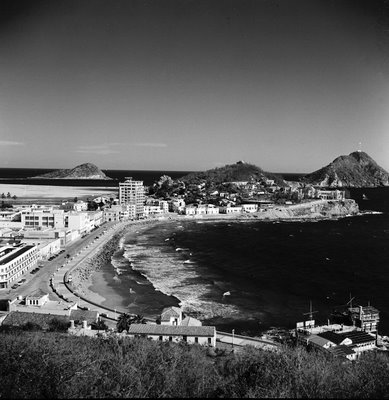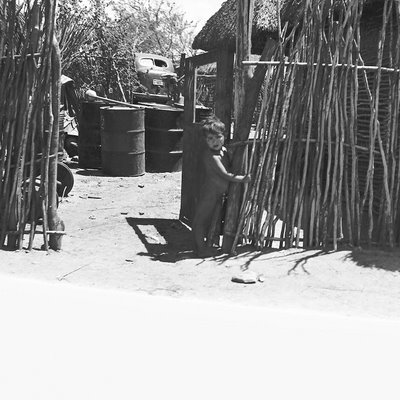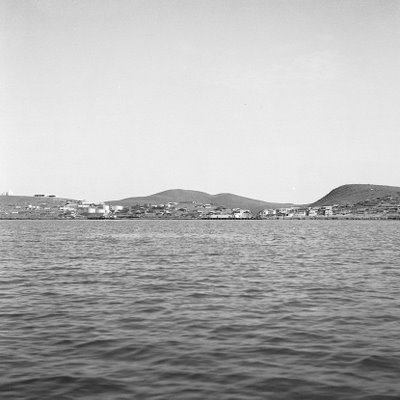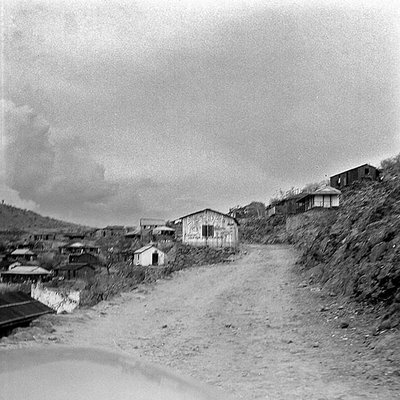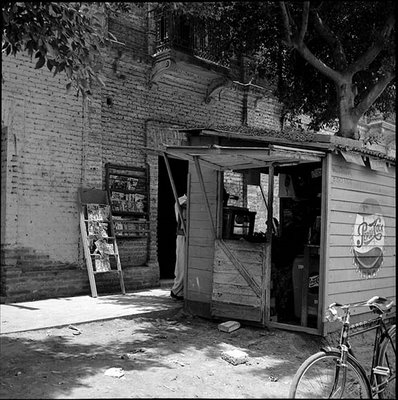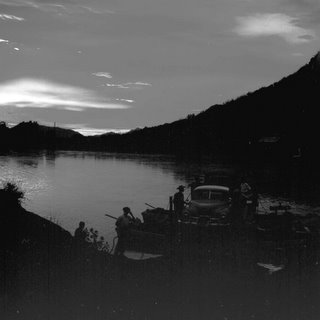Sunday, March 26, 2006
 Camp on the beach at Mazatlan. Keys in the trunk. Radio tower hill in the
Camp on the beach at Mazatlan. Keys in the trunk. Radio tower hill in thebackground. Cathedral towers near the center. This great beach had nothing on it.
The "Gerry Cans," from army surplus, were to carry drinking water
that we begged from Pepsi bottling plants along the way, a reliable source
of distilled water. We were not free from dysentery, but it came from another
source we soon found here in Mazatlan.
Tuesday, March 21, 2006
Thursday, March 16, 2006
Sunday, March 12, 2006

Dr. Chapman on his boat in Topolobampo.
He had lived here since the twenties. I told him I had seen red-headed Mexicans in the towns between Guaymas and Los Mochis. He said that they were the descendents of an Irish priest who came to Mexico to preach in the mountains to the east that separate the state of Chihuahua from Sonora and Sinaloa. The priest’s offspring were a western diaspora.
He had lived here since the twenties. I told him I had seen red-headed Mexicans in the towns between Guaymas and Los Mochis. He said that they were the descendents of an Irish priest who came to Mexico to preach in the mountains to the east that separate the state of Chihuahua from Sonora and Sinaloa. The priest’s offspring were a western diaspora.
Thursday, March 09, 2006
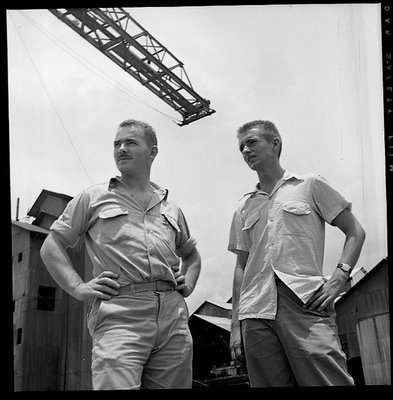 Roger with Mr. Hympleton, United Sugar Factory, Los Mochis. Like some other
Roger with Mr. Hympleton, United Sugar Factory, Los Mochis. Like some otherAmericans whose companies were nationalized, his family stayed to run the mill for the new owners. He told us of a Dr. Chapman who came down with the Southern Pacific Railroad to open a clinic and had also stayed on after Mexico nationalized the railroad. Perhaps he introduced us. Dr. Chapman said we could spend the night in his clinic, since it was not busy then. We did. We spent the night on hospital beds. Nice Mexican nurses kept sticking their heads in to ask if we needed anything. The doctor had probably told them to take care of the boys. We were too naive to know what they meant. We slept a quiet night.
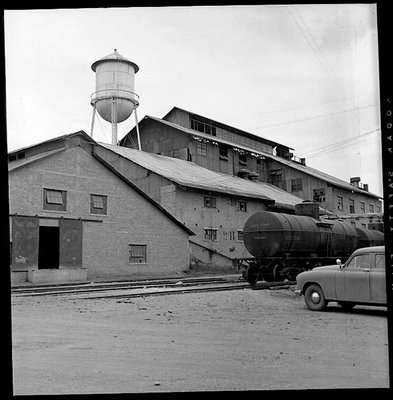 The sugar mill at Los Mochis, said to be the biggest on that coast. And the 1948 Frazer. Not the brightest choice. No one in Mexico had parts for it when it broke down. But the Mexican mechanics were as ingenious as Cuban mechanics fifty years later. They kept it running. I recall the car as a Frazer. Fred recalls it as a Kaiser. It was his car, but I still say Frazer. A slab-sided Frazer, famous in its day.
The sugar mill at Los Mochis, said to be the biggest on that coast. And the 1948 Frazer. Not the brightest choice. No one in Mexico had parts for it when it broke down. But the Mexican mechanics were as ingenious as Cuban mechanics fifty years later. They kept it running. I recall the car as a Frazer. Fred recalls it as a Kaiser. It was his car, but I still say Frazer. A slab-sided Frazer, famous in its day.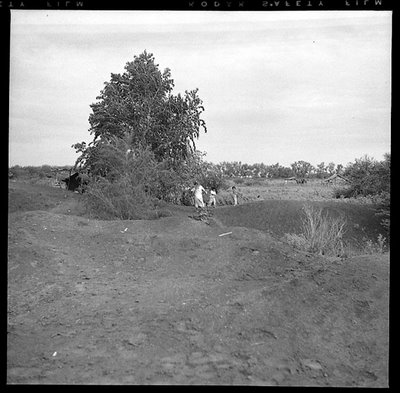 We camped off the highway in cots by our car, usually in the dark. In the morning we sometimes found ourselves near people and their animals or homes. (There are homes to the left and right above.) Most steered clear of us; a few came by to sell us goats’ milk for our coffee and cereal. I developed a taste for goats’ milk, rich and salty, probably from the salt brush the goats ate.
We camped off the highway in cots by our car, usually in the dark. In the morning we sometimes found ourselves near people and their animals or homes. (There are homes to the left and right above.) Most steered clear of us; a few came by to sell us goats’ milk for our coffee and cereal. I developed a taste for goats’ milk, rich and salty, probably from the salt brush the goats ate.